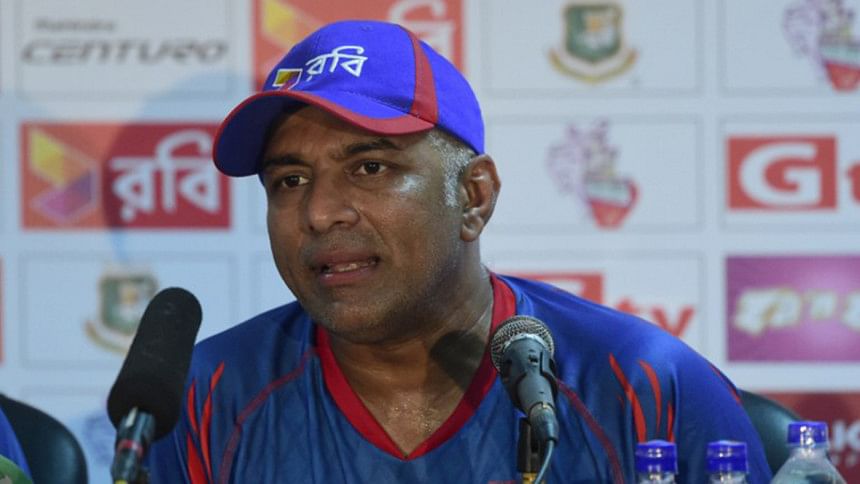Pitch appears to puzzle Bangladesh

Bangladesh coach Chandika Hathurusingha has said he was surprised to see a layer of cut grass on the pitch for the one-off Test against India in Fatullah.
The sprinkling of cut grass all over the wicket is a technique that has been used in pitches across the country for nearly a decade.
Because of overuse, pitches tended to break up so groundsmen decided to roll dead grass on top of the wicket. It has worked to varying degrees to keep the wicket intact. It usually has little effect on bowling.
"The pitch is hard to read because I have never seen a pitch like this before," Hathurusingha said on the eve of the match. "We have to take the heat into account as well. The wicket is not going to be a fast bowler's paradise, that's what I can tell you.
"It is new for me. I don't know, may be for other people also. I am also waiting to see how it is going to play out."
It is not uncommon for the home team to have a say in the nature of the pitch but Hathurusingha said he had no "control" over the pitch for the first time. "I have no idea to predict this wicket. For the first time we have no control over what type of wicket this will be. We will try to select the team that gives us best chance to take 20 wickets."
Bangladesh captain Mushfiqur Rahim said the pitch was different but the players had some idea how it would behave. He was doubtful whether the cut grass would hold the pitch together for the length of the match.
"The wicket here is quite different. We have played first-class matches and some BCL one-day matches here. We have some idea of it.
"We don't usually see grass on Test wickets, but on ODIs and other formats. Whether the grass will hold for five days or how much it will impact on the play, it is new to me. Spinners will have advantage from the first day, and the batsmen are also likely to be at ease here."
Fatullah has hosted 10 first-class and 35 List-A matches this season, as well as a large number of club matches and practice games.
By some estimate, the ground has hosted more than 120 matches since September last year, more than any ground in the country.
Hathurusingha said the grass was used to keep the wicket intact for all five days, though the Fatullah surfaces have offered low bounce and less wear and tear since being relaid in 2011.
"There's a lot of cut grass on the wicket. I don't know how it is going to behave," Hathurusingha said. "Either you have a lot of grass on the wicket or no grass on the wicket. It is unusual. They have a bit of cut grass on top of the wicket. I don't know how it is going to work.
"I think it has to do with the heat, to try to keep the moisture longer. Maybe that's the reason they put cut grass on the wicket."
Hathurusingha repeatedly saying, "I have never seen this kind of wicket," could also be the coach's ploy to unsettle the Indians. The visitors had not had a look at the Fatullah pitch until 1:30 pm the day before the game.

 For all latest news, follow The Daily Star's Google News channel.
For all latest news, follow The Daily Star's Google News channel. 



Comments